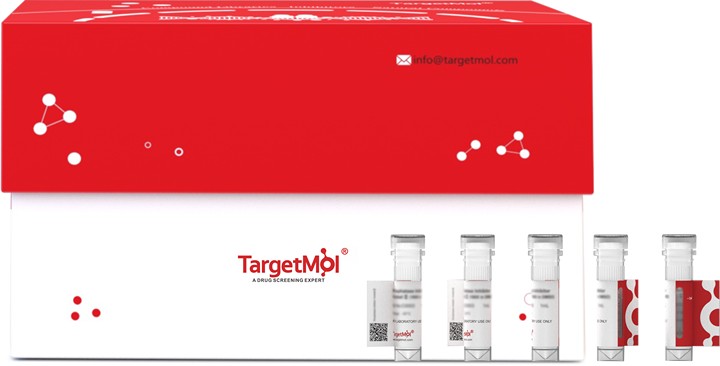购物车
全部删除  您的购物车当前为空
您的购物车当前为空
Ephrin B2/EFNB2 Protein, Human, Recombinant is expressed in HEK293 mammalian cells. The predicted molecular weight is 23.1 kDa and the accession number is P52799.

| 规格 | 价格 | 库存 | 数量 |
|---|---|---|---|
| 5 μg | ¥ 336 | 6-8日内发货 | |
| 10 μg | ¥ 538 | 6-8日内发货 | |
| 20 μg | ¥ 858 | 5日内发货 | |
| 50 μg | ¥ 1,700 | 5日内发货 | |
| 100 μg | ¥ 3,380 | 5日内发货 |
| 生物活性 | 1.Measured by its binding ability in a functional ELISA.
2. Immobilized human EFNB2 at 10μg/mL (100μL/well) can bind biotinylate human EphB4-Fc , the EC50 of biotinylate human EphB4-Fc is 5-60 ng/mL. |
| 产品描述 | Ephrin B2/EFNB2 Protein, Human, Recombinant is expressed in HEK293 mammalian cells. The predicted molecular weight is 23.1 kDa and the accession number is P52799. |
| 种属 | Human |
| 表达系统 | HEK293 Cells |
| 标签 | Tag Free |
| 蛋白编号 | P52799 |
| 别名 | LERK5,Htk-L,HTKL,EPLG5,ephrin-B2 |
| 蛋白构建 | A DNA sequence encoding the human EFNB2 (NP_004084.1) (Met1-Ala229) was expressed with six amino acids (ENLYFQ) at the C-terminus was expressed and purified. Predicted N terminal: Ile 28 |
| 蛋白纯度 | > 95 % as determined by SDS-PAGE |
| 分子量 | 23.1 kDa (predicted); 32-36 kDa (reducing conditions) |
| 内毒素 | < 1.0 EU/μg of the protein as determined by the LAL method. |
| 蛋白性状 | Lyophilized powder |
| 缓冲液 | Lyophilized from a solution filtered through a 0.22 μm filter, containing PBS, pH 7.4. Typically, a mixture containing 5% to 8% trehalose, mannitol, and 0.01% Tween 80 is incorporated as a protective agent before lyophilization. |
| 复溶方法 | A Certificate of Analysis (CoA) containing reconstitution instructions is included with the products. Please refer to the CoA for detailed information. |
| 存储 | It is recommended to store recombinant proteins at -20°C to -80°C for future use. Lyophilized powders can be stably stored for over 12 months, while liquid products can be stored for 6-12 months at -80°C. For reconstituted protein solutions, the solution can be stored at -20°C to -80°C for at least 3 months. Please avoid multiple freeze-thaw cycles and store products in aliquots. |
| 运输方式 | In general, Lyophilized powders are shipping with blue ice. |
| 研究背景 | EphrinB2 also known as EFNB2 is a member of the ephrin family. EphrinB2 is involved in establishing arterial versus venous identity and perhaps in anastamosing arterial and venous vessels at their junctions. The transmembrane-associated ephrin ligands and their Eph family of receptor tyrosine kinases are expressed by cells of the SVZ. Eph/ephrin interactions are implicated in axon guidance, neural crest cell migration, establishment of segmental boundaries, and formation of angiogenic capillary plexi. Eph receptors and ephrins are divided into two subclasses, A and B, based on binding specificities. Ephrin subclasses are further distinguished by their mode of attachment to the plasma membrane: ephrin-A ligands bind EphA receptors and are anchored to the plasma membrane via a glycosylphosphatidylinositol (GPI) linkage, whereas ephrin-B ligands bind EphB receptors and are anchored via a transmembrane domain. An exception is the EphA4 receptor, which binds both subclasses of ephrins. EphrinB2 expression progressively extends from the arterial endothelium to surrounding smooth muscle cells and to pericytes, suggesting that ephrin-B2 may play an important role during formation of the arterial muscle wall. |